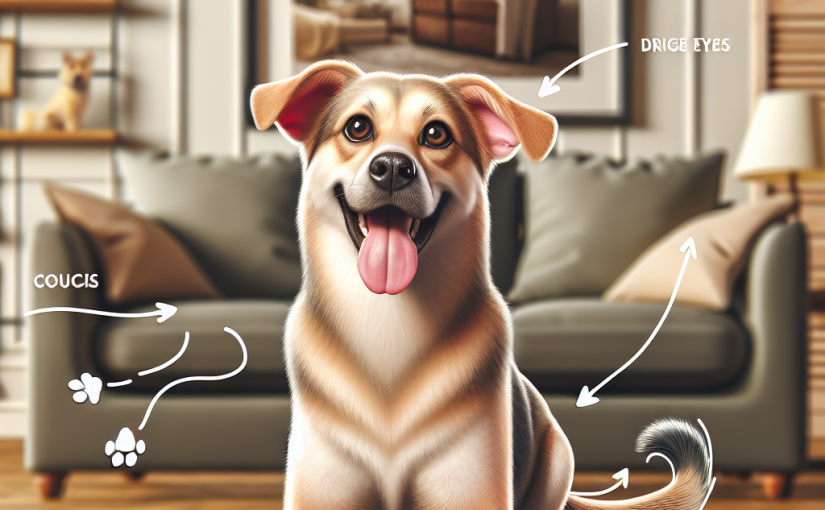Introduction to Natural Flea Remedies for Cats

Hey there, fellow cat caretakers! So, you’ve got a flea problem, huh? We’ve all been there. Fleas are those tiny little demons that seem to appear out of nowhere, and before you know it, your cat is scratching like there’s no tomorrow. But fear not, my friends. We’re diving into the world of natural flea remedies for cats—because who wants to douse their beloved feline in chemicals, right?
I’ve been around the pet block for a few decades now, so trust me when I say, the natural route is not just a trend. It’s a genuine game-changer for many of us. You know the thing about fleas? They’re relentless. But nature, as it turns out, has its own arsenal.
The Power of Citrus: Lemons and Oranges
Ah, citrus—those bright, zesty fruits that remind us of summer picnics and fresh lemonade. Who would’ve thought they’d be a secret weapon against fleas? It turns out, citrus flea treatment for cats is a thing. Yep, lemons and oranges can help repel these pesky critters.
Picture this: a simple DIY solution involving nothing but some lemon peels and a pot of boiling water. You let the citrus peels simmer, and voilà! You’ve got yourself a flea spray. It’s as easy as pie. The citrus oils don’t just smell divine—they actually repel fleas. Just a quick spritz on your cat’s fur, and you’re good to go.
Now, don’t go squeezing lemon juice directly onto your feline friend. We’re not making lemon-flavored cats here. Keep it simple and safe. It’s about the oils, not the juice.
Lavender and Chamomile: Nature’s Gentle Warriors
Let’s talk about lavender and chamomile. These aren’t just for your grandma’s tea anymore. They’ve muscled their way into the natural flea treatment scene, and for good reason. These plants are the gentle giants of flea warfare.
Imagine this: you’re lounging on your porch, a gentle breeze carrying the scent of lavender. It’s calming, right? Well, fleas aren’t fans. Lavender flea repellent for cats works like a charm. You can even make a little sachet to hang around your cat’s favorite spot.
And chamomile? This little flower is more than just a sleep aid. A chamomile flea treatment for cats involves brewing a mild tea and using it as a rinse. Your cat will smell like a spa day, and those fleas won’t know what hit them.
Apple Cider Vinegar: The Unexpected Ally
Apple cider vinegar—who knew it had so many uses? You’ve probably got a bottle sitting in your pantry right now, right? This is where it comes into play as an unexpected ally in flea control.
A little secret: fleas hate the smell and taste of apple cider vinegar. A diluted mix makes for a great spray. It’s not an instant fix, but with persistence, you’ll see those fleas packing their bags. Just be sure not to soak your cat. A light misting will do the trick.
I remember a time when I tried this, and my cat gave me the look of all looks. But hey, a little vinegar smell is a small price to pay for a flea-free life, don’t you think?
Home Treatments and DIY Solutions
Okay, folks, let’s get down to business. Home remedies for cat fleas are not just about saving a buck. They’re about taking control, about knowing exactly what goes onto your pet.
DIY flea solutions for cats abound, and they’re easier than you might think. From flea combs to baking soda, there’s a whole toolkit at your disposal. One of my personal favorites? Diatomaceous earth. It’s like a tiny, natural flea vacuum. Just sprinkle a bit on your cat’s bedding, and watch it work its magic.
Remember the key here is consistency. It’s not a one-and-done deal. It takes a bit of elbow grease and a lot of love. But in the end, isn’t that what being a pet parent is all about?
Thanks for sticking with me through this flea-ridden journey. It’s not always easy, but armed with nature’s best, you’ve got this. Here’s to you and your flea-free feline. Keep fighting the good fight, and give your cat an extra cuddle from me. 🐾
Getting to Know the Flea Life Cycle
Alright, let’s start with the flea life cycle. These tiny devils don’t just appear out of thin air. Nope, they have a whole soap opera of a life cycle — from egg to adult. You ever wonder how they pull off such invasions? Understanding their saga is key to natural treatment for fleas on cats. It’s like learning the plot before watching a thriller. First, they lay eggs, lots of them. Then, they morph into larvae — those squiggly things you don’t want to meet on your carpet. Next, the pupae stage, where they hide in cocoons like little Houdinis. Finally, they emerge as adults, ready to bite. Knowing these flea infestation stages is like having a cheat sheet. You can’t zap ‘em if you don’t know their game. So, grab that magnifying glass and let’s break this cycle like a twig on a quiet hike.
Household Hacks: Creating a Flea-Free Environment
Now, onto making your home less of a flea five-star resort. You don’t need to call in pest control; you’ve got this. With a bit of elbow grease and some household items, you can get rid of those pesky fleas. DIY flea control for homes isn’t just a pretty phrase — it’s your new mantra. Start with salt. Sprinkle it like confetti on your carpet. It dries out the larvae and eggs. Fleas hate it. Then, your vacuum is your best friend. Vacuum like you’re on a mission. Get under the couch, in the corners, everywhere. This isn’t just cleaning; it’s war. You can also make a homemade flea spray for cats. Mix water with a splash of vinegar and spray it on surfaces. It’s like telling fleas they’re not welcome. Make your home a no-flea zone, and watch them pack their bags.
Herbal Remedies: Nature’s Answer to Fleas
Herbs, not just for cooking. They’re nature’s little wonders when it comes to flea prevention. Imagine having a garden full of flea fighters. Some of these plants are like caped crusaders — herbal flea remedies for cats that work wonders. Catnip isn’t just for making your cat go wild; fleas can’t stand it. Rosemary, too. Crush it up and sprinkle it around. Fleas will be heading for the hills. Mint and lavender are also in your corner. They’re pleasant to us, but fleas? Not so much. It’s not magic; it’s just nature doing its thing. These leafy heroes help with natural flea prevention for cats without any hocus-pocus. You don’t need a magic wand, just a green thumb. So, plant some herbs and let them do the heavy lifting.
Essential Oils: A Natural Flea Repellent
Essential oils — now we’re getting fancy. They’ve got a reputation, and for good reason. But hold your horses, not all essential oils are safe for cats. You want to avoid making your kitty grumpy. The trick is knowing which ones are feline-friendly. Lavender oil? Yes, please. It’s not just for relaxation; it’s a flea’s worst nightmare. Citronella oil? Another contender. Fleas can’t stand the stuff. But remember, less is more. A drop here and there, and you’re golden. Essential oils safe for cats are your new secret weapon. They’re nature’s flea repellent, without the chemicals. Use them wisely, and watch fleas run for cover. It’s like having a natural flea repellent that smells good, too. Just a few drops can make all the difference.
Signs Your Cat Needs a Vet Visit
Sometimes, no matter how hard we try, fleas win a round. Your cat’s still scratching up a storm, and it’s time to call in the big guns. When to take your cat to the vet for fleas? If your kitty’s losing fur, has red skin, or seems just plain miserable, it’s vet time. They’re the pros, after all. They’ve got tricks up their sleeves and years of experience. Don’t wait until your cat’s a scratching mess. It’s not just about fleas anymore; it’s about your cat’s well-being. The vet can provide treatments that go beyond DIY. It’s a team effort, really. You do your part at home, and the vet backs you up when things get tough. So, keep an eye on your feline friend. They deserve the best care, and sometimes that means a trip to the vet. Thanks for sticking around, folks. Your cat’s gonna thank you, and so will your sanity. Keep fighting the good fight.
Understanding Flea Life Cycle: A Cat’s Perspective
Let’s dive into the world of fleas from a cat’s point of view. Imagine a world where tiny vampires feast on your blood and make their homes in your fur. That’s what cats deal with when it comes to fleas. These pesky critters have a life cycle—egg, larva, pupa, and adult. Sounds simple, right? Not quite. This cycle can happen right under your nose, with eggs hiding in carpets and larvae munching on organic matter. It’s a sneaky business, and if you want to tackle natural treatment for fleas on cats, you gotta understand this cycle.
Now, your cat doesn’t know about cycles or stages—they just want relief. They itch, they scratch, and sometimes, they give you that look. You know the one. The “please do something about these fleas” look. But hey, knowledge is power, right? Understanding the flea life cycle in cats is your first step toward a flea-free home.
Natural Preventive Measures: Keeping Fleas at Bay
Okay, so you know what you’re up against. Time to arm yourself with some natural flea prevention for cats. We’re not talking about fancy potions or anything. It’s about simple, practical steps. First, keep your house clean. Vacuum like you’re in a high-stakes competition. Those flea eggs don’t stand a chance against a determined vacuum. And wash your cat’s bedding—often.
Thinking of a holistic flea treatment for cats? Consider herbs like rosemary and lavender. They smell great and might help repel these pests. But don’t get too carried away; your home shouldn’t smell like a garden party.
Bathe your cat with a gentle, natural shampoo. No harsh chemicals, please. Your cat will thank you, maybe by purring or, if you’re lucky, by not scratching you during bath time.
DIY Flea Trap: A Weekend Project
Ah, the DIY flea trap. This is where things get fun—or as fun as dealing with fleas can be. It’s a simple project, really. You need a dish, some water, a bit of dish soap, and a nightlight. Place the dish with soapy water under the light. Fleas are drawn to the light and warmth, and they’ll leap into the water, where the soap traps them.
This DIY flea trap for cats isn’t a miracle worker, but it’s a neat little weekend project. Plus, it’s oddly satisfying to see those fleas meeting their soapy doom. Just don’t forget to change the water daily. Nobody likes a stagnant flea graveyard.
Essential Oils: Do’s and Don’ts for Cats
Essential oils can be a tricky business. While they offer a natural treatment for fleas on cats, not all oils are created equal—or safe. Cats are sensitive, and their livers don’t handle certain substances well. So, before you start dousing your feline friend with oils, know your do’s and don’ts.
Lavender and cedarwood oils are generally safe for cats. But tea tree oil? That’s a big no-no. You might think you’re helping, but you could be making things worse. It’s always best to dilute oils and maybe do a patch test on your cat’s bedding before going full steam ahead.
Remember, essential oils safe for cats can be part of your flea-fighting arsenal, but tread lightly. Your cat’s health is more important than a few fleas.
Wrapping It Up: Long-Term Solutions and Final Thoughts
So, there you have it. Flea control isn’t a one-time thing. It’s a marathon, not a sprint. You’ve got to think long-term flea control for cats. Regular grooming, a clean home, and maybe the occasional DIY flea trap can keep those little buggers at bay.
Don’t forget the homemade flea remedies for cats. A simple apple cider vinegar spray can work wonders. Just mix it with water and spritz it on your cat’s fur. They’ll smell like a salad, but if it keeps the fleas away, who’s complaining?
In the end, it’s about finding what works for you and your cat. No two cats are the same, and what works for your neighbor’s tabby might not work for your Siamese. Keep at it, stay patient, and remember—your cat will thank you in their own unique way. Maybe with a purr, maybe with a headbutt. Or perhaps they’ll just stop giving you that “do something” look. Good luck out there, and thanks for sticking with this flea-fighting journey.
Quick Takeaways:
Alright, let’s cut to the chase. Fleas are like that uninvited guest who just won’t leave. But don’t worry, natural treatment for fleas on cats is possible. First off, understanding the flea life cycle is your secret weapon. These little critters go from egg to adult, and knowing this helps you break the cycle.
Next, there’s a treasure trove of home remedies for cat fleas. Citrus flea treatment for cats is a popular choice—just a bit of lemon juice can send fleas packing. Then there’s the lavender flea repellent for cats. A few drops, and suddenly your cat smells like a fancy spa, and fleas hate it. Chamomile doesn’t just calm your nerves; it’s also a decent chamomile flea treatment for cats.
Apple cider vinegar for flea control? Yep, that’s another trick up our sleeves. Mix it with water and spritz it on your cat. It’s like a DIY flea solution for cats that you can whip up in no time.
Now, remember that not all essential oils are safe for cats. Stick to the ones that are, and you’ll keep your feline friend happy. Finally, if your cat is still scratching, it’s time to visit the vet. They’re the real heroes when things get out of hand.
So, get ready to roll up your sleeves. Your cat will thank you with a headbutt or two.
FAQs:
1.
What are some effective natural flea remedies for cats?
Natural treatment for fleas on cats includes several options. Citrus flea treatment for cats is one—just a bit of lemon juice can help. There’s also the lavender flea repellent for cats. It smells nice and keeps fleas away. Chamomile is another good option. These herbal flea remedies for cats are simple and easy.
2.
Can I use essential oils as a natural flea treatment for cats?
Essential oils can be a game-changer, but tread carefully. Not all oils are cat-friendly. Stick to lavender or chamomile, which are safe. These oils act like a flea’s worst nightmare. Always dilute oils before use. A few drops go a long way.
3.
How does apple cider vinegar work in flea control for cats?
Apple cider vinegar is a DIY flea solution for cats. It’s as easy as mixing it with water. Spray it on your cat’s fur and watch as fleas scatter. It’s a simple home remedy for cat fleas that doesn’t break the bank.
4.
What should I do for long-term flea control on my cat?
Long-term flea control involves a mix of strategies. Natural flea prevention for cats is key. Regularly vacuum your home and wash your pet’s bedding. Use citrus or lavender sprays as ongoing deterrents. If the infestation persists, consult a vet.
5.
When should I take my cat to the vet for fleas?
Sometimes, despite your best efforts, fleas won’t budge. If your cat is scratching non-stop or losing fur, it’s time to see the vet. They can offer treatments that go beyond home remedies. Don’t wait too long—your cat’s comfort is important.
Conclusion:
In the wild world of flea control, the journey is half the battle. Natural treatment for fleas on cats isn’t just possible—it’s practical. From lemony fresh citrus flea treatments to the calming touch of chamomile, these DIY flea solutions for cats are your toolkit. Remember, though, that not all oils are made equal. Stick to those that won’t upset your feline friend.
And let’s not forget apple cider vinegar—an oldie but a goodie. It’s not just for salads anymore. But if the going gets tough, don’t hesitate to call in the professionals. Vets know their stuff, and sometimes, a little expert advice is the best course of action.
So here’s to you, brave pet owner. May your home be flea-free and your cat content. Thanks for hanging in there. Give yourself a pat on the back—you’ve earned it.
References:
1. https://www.thesprucepets.com/home-remedies-for-fleas-on-cats-4580388
2. https://www.petmd.com/cat/how-get-rid-cat-fleas-naturally
3. https://www.holistapet.com/blogs/home-remedies-for-cats/feline-fleas
4. https://www.pranapets.com/blogs/pet-health/homemade-remedies-for-fleas-ticks-effective-solutions
5. https://www.worldsbestcatlitter.com/blog/five-ways-to-get-rid-of-cat-fleas-naturally/
Our solution eradicates fleas on contact without harmful chemicals, ensuring a safe environment for your pets and family. Easy to use and highly effective, SayByeBugs helps you maintain a flea-free home. Learn more and order today at SayByeBugs.com
Our solution eradicates fleas on contact without harmful chemicals, ensuring a safe environment for your pets and family. Easy to use and highly effective, SayByeBugs helps you maintain a flea-free home. Learn more and order today at SayByeBugs.com




